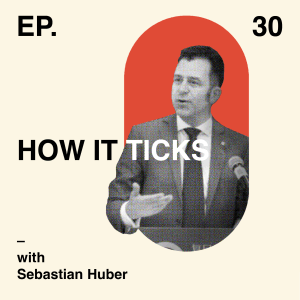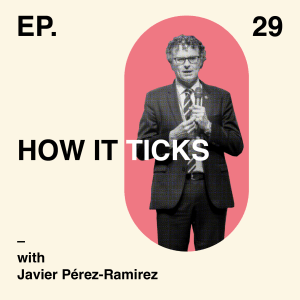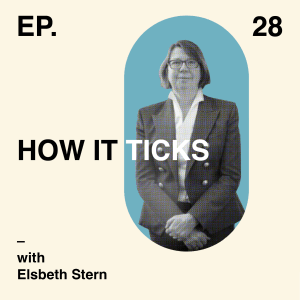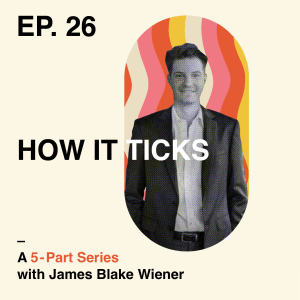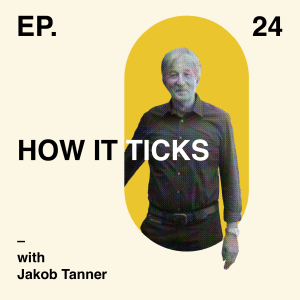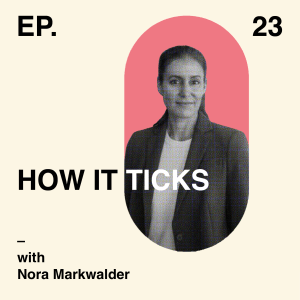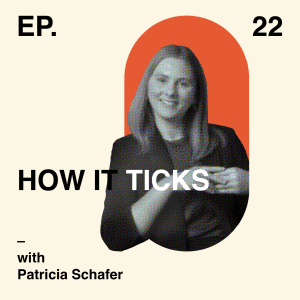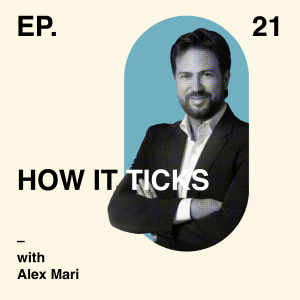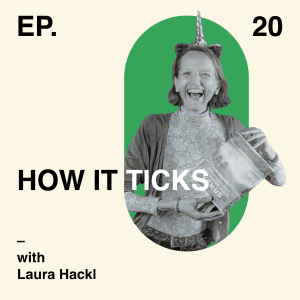
How Switzerland Helped Land on a Comet | Swiss Astrophysicist (#25)
Episode Summary
Switzerland may not have a space agency, but it plays a surprisingly important role in global space exploration. In this episode, we explore the Rosetta mission—the first spacecraft to orbit and land on a comet—and the Swiss-led instrument that made key discoveries along the way.
Expect to learn how Swiss engineering helped make the mission possible, what comets can teach us about the early solar system, and why the detection of amino acids on comet 67P was such a scientific breakthrough. We also discuss the planning behind long-term space missions, the human side of scientific leadership, and what the future might hold for planetary science.
Meet Kathrin Altwegg
Kathrin Altwegg is an astrophysicist and professor emerita at the University of Bern. She served as principal investigator for ROSINA, one of the key scientific instruments on ESA’s Rosetta mission. Throughout her career, she has championed Switzerland’s role in space science and contributed to several landmark missions exploring the solar system. Her work has helped deepen our understanding of comets, planetary formation, and the building blocks of life in space.
Transcript
Mike: [00:00:00] what first spark your interest, in space exploration? My understanding is that wasn’t where you originally started when it comes to studying.
Kathrin: No I started out with physics, so I did solid state physics in my PhD work in Basel, and then I moved to New York. I did, physical chemistry there and then ended up in space research by chance.
Mike: What was the chance
Kathrin: I met my now husband during my PhD work. We were working on very similar topics, organic molecular crystals. He had to show me how to make crystals, and that’s how we fell in love.
Mike: I’m romantic
Kathrin: It was a small room in the cellar and, so you have to be close together.
Mike: comfortable in each other’s personal space? I
Kathrin: yeah.
[00:01:00] And so we were able to have two positions in New York at the New York University in two different groups. But then we were looking for two jobs, which were geographically close in Switzerland.
And that was not easy at that time. And so there were two jobs in Bern. One at the university in space research and the other one in, telecommunication, a company for telecommunication. And the company didn’t want the woman, so it was easy who had to take which job
Mike: Interesting. So you really landed space for research because it was the only job at the time that would take you in Switzerland
Kathrin: and was close to the job of my husband.
Mike: and Right. How was the space exploration scene in Switzerland at that [00:02:00] time?
Kathrin: Bern already was quite heavily involved in space exploration due to, professor Johanne skies. Was involved in Apollo 11. So we, burn through the only non-American instrument on Apollo 11, and that was a solar, wind, sail. An experiment to measure the solar wind on the moon.
That was, a simple experiment.
You, just some, aluminum foil
The astronauts took it to the moon, put it on the moon. And because you don’t have an atmosphere and you don’t have a magnetic field on the moon, particles from the sun can penetrate directly on the surface of the moon, which is not possible at Earth because we have a magnetic field.
They are turned around and, we also have an atmosphere. So [00:03:00] remaining particles just react with the atmosphere before they reach the surface of the earth. So then in the end, the astronauts took the foil again and brought it back to burn.
After that, burn was involved in the first European That was sea, that was a, spacecraft around the earth measuring the interaction between solar, wind, and the earth magneto sphere.
By that time, isa, the European Space Agency was formed, and actually Switzerland is a founding member of isa. We are not part of eu, but we are a founding member of Is.
Mike: All of the research that comes out of University of Burn, how does that translate into. The courses which students go and study. I’m assuming that when you have this relationship with nasa, you [00:04:00] have very interesting people. Does that also correlate to interest in the area of people wanting to go and study?
Kathrin: If you want to go into space research, you start with physics, so that’s a normal physics course, at least up to the bachelor. After that, you can try to do the master thesis in space research already, and we have several groups and we always have students doing master’s thesis in the field. Of course, we also give courses that then in this field.
About comets, about the solar system, about planets, about planetary atmospheres and so on.
Mike: Do you think when there’s huge events like putting up the James we Telescope, or when you have some accomplishments from SpaceX, these big events which make the news, do you think things like that spark people’s interest in exploring space?
Kathrin: James Web, yes. [00:05:00] SpaceX probably.
No, you know that. But SpaceX is normally not science.
Mike: What do you mean?
Kathrin: SpaceX is not science. They don’t do science, they do commerce.
It’s all about starlink.
Mike: But what about the innovative rockets?
Kathrin: Rock rockets is not space science. It’s space technology. And they do that at ETH. But in burn, we really do science.
Real science. We build instruments to do science, but we don’t build spacecraft. We don’t build rockets.
Mike: Do you think Switzerland’s contribution to space science is a big contribution within Europe?
Kathrin: Yes, definitely. As I said, we are a founding member of ES a and we were involved in most [00:06:00] missions. We were involved in many NASA submissions, also in Japanese mission structure, even in the good old times in Russian missions and in India missions. So we are involved in globally, in space missions, building hardware, and flying them.
Mike: Is that because. The Swiss have a skillset in an area of expertise which the rest of the world, respects and needs
Kathrin: Yes, I think so. Especially the precision mechanics
Mike: precision
Kathrin: from watches, building watches,
Mike: course.
Kathrin: in space are a few requirements. You have to, build very lightweight weight because each gram costs to launch. So if you apply for an instrument, the most important [00:07:00] number is the kilograms.
And the second most important number is the power.
And the third most important number is the data rate. And the, you have to minimize stem and still do a very good experiment. And I think that’s one of our, plus points,
we can build very good instruments because we can machine them very precisely.
Mike: Precision Engineering definitely is, the branding of Switzerland, that’s for
Kathrin: yes. Exactly. Exactly. Yeah.
Mike: Now, I’d love to talk to you about the Reina project. But before I get into that, I wanted to ask you, I know you are quite heavily involved in promoting women in space research and women in stem.
What was it like back when you moved, when there were so few, options to the point where some weren’t even available to you?
Kathrin: I was the only woman in my, class during my physics. But [00:08:00] then I did my PhD with a woman professor cometra from, and that helped a lot because for me that was a lot of inspiration. I knew that after that I knew that women can succeed in science, in physics, and then coming to, to burn Well in, also in New York, I had very good mentors in New York.
I had a very good professor and professor Gais was excellent for as mentor. And then I had Professor B. He also, he they really believed in me, which is very important. So the problems probably came much later.
During the Rosetta mission when we were successful,
Mike: When you were successful.
Kathrin: yes.
Mike: That’s interesting.[00:09:00]
Kathrin: Yes
Mike: maybe let’s start with the Rosetta project then. If it was difficult as a woman, how did you land the role of the, was it the head of the Rosina project?
Kathrin: Yes. I started, when I started in 82. I actually started first with an experiment for the higher atmosphere. Empty the empty instrument. But the berm was then involved in cometto cometto to come Harry. That was a European mission, a very, fast mission. So it was decided in 80 and the launch 1985, which is very fast to build all the instruments and the spacecraft and everything.
And it was actually also the first time that Europe did the deep space mission. The Americans were involved first, but then they, said they didn’t [00:10:00] have the money. And anyhow, Europe is not able to do such a mission. That’s what they said. And then Europe showed them that we could do, but it was a very stressful time. And, so I, I was moved from the higher atmosphere of tears Earth to, to this instrument comet, and I was responsible for the software. At that time in 82 software was, no laptops. We had a PTP 11. And so you had to understand something about the hardware and you had to do programming. And, but the good thing is I learned that while I was in the US because in this physical chemistry lab, I also had a PDP 11 ms. So I, I had to be there for all tests [00:11:00] because they needed this PDP 11 to, to work with the instrument. And they also had to go to Bristol because that’s where the, they built the spacecraft they had to go to, that’s where they tested the spacecraft to in, in re, or, Netherlands. That was where they put everything together.
So I was always there. So I really got the very good introduction in space missions because I was there from the first point up to almost launch. I was the nurse in French, very young. The problem was, I was, pregnant at that time. I, my doctor said I shouldn’t stay there long because of malaria, so I missed the launch.
But all the rest I,
Mike: It must be devastating.
Kathrin: So that was for me, a very good [00:12:00] introduction. Then I had my first baby, so I reduced my workload. I had my second baby two years later, almost two years later, I reduced, still further. But the professor was really supportive in this. I could work part-time and still be involved in. That was then the mission was very fast.
We flew nine months and the mission, the actual mission was only a few hours because it was a fly by at the comet and we had a very, we flew with 68 kilometers per second, so that
was very
Mike: my head around that.
Kathrin: Yeah, it’s 68 times the speed of a bullet.
That was the first
cometary mission. And then we found out that comets are really very interesting, but you have to have [00:13:00] better instruments.
Mike: What are you looking for? What problems are you trying to solve? Is it just understanding the world better or is there specific problems in mind you’re hoping to solve looking at comments.
Kathrin: The comets are the best preserved material from the early days of the solar system. So if we understand comets, if we know what they are made of, we can extrapolate backwards.
So these molecules, whatever we find, they are older than the solar system, and that means they exist in the universe. Then you can extrapolate or think about how probable it is that there is life elsewhere.
Mike: How do you know how old it is? How do you know that it’s beyond the age of the, like it’s, this might seem silly, but I just can’t understand.
Kathrin: yeah. Let me start again. It’s if you build a solar system, you start with a [00:14:00] dark molecular cloud that’s a cloud consisting of dust and gas. And this cloud collapses, it gets dense. And in this cloud, you, the first thing you form are planetesimals, tiny bodies, a few kilometers, and then some of them grow to become a star or planets and a lot of them remain small. And stay five from the star. And these are the comets.
So these were really the first planet decimals in our solar system. And they got their material. They, is no other possibility that material was already there in the star crowd because they are way too far from the sun. There is no chemistry ongoing in the comet.
It’s tic kelvin, which is minus 240 degrees [00:15:00] Celsius. You don’t have chemistry there.
So the molecules are older than the solar system and it’s the material our solar system was built from.
Mike: Interesting.
Kathrin: Yeah.
Mike: Now, the Rosetta project, I will, I’ve tried to summarize it myself. You tell me if I get this right and also I’m probably going to get the name of the comment wrong when I try to pronounce it.
Kathrin: That’s okay.
Mike: Rosetta was a European Space Agency Mission launched in 2004 with the goal of studying Comet 67 p Tru.
Can you step in for the name? Thank you. Let’s just let me refer to it to as 67 p from now on to save the embarrassment of me. It was the first ever spacecraft to orbit a comet carrying a small lander called the Phil file lau file, which made the first ever soft landing on a comet surface in [00:16:00] 2014.
Mission lasted 12 years, covered more than 7 billion kilometers, and provided groundbreaking insights into the early solar system, including the discovery of organic molecules like glycine.
Kathrin: Yeah, very good.
Mike: Thank you. I’m not gonna lie, chat chippy tea helped me with, the phrasing towards the end, as you could probably imagine.
Kathrin: Yeah.
Mike: How do you even begin to plan something that, takes more than 10 years to execute?
Kathrin: Yeah. So the first step is that you have to convince ISA and politicians that this is the right thing to do to make a mission, to commit and or pick the comet, and that was still Professor GE with colleagues from all over Europe who did this job. So they had a, yeah, they convinced first esa and then the politicians that [00:17:00] this mission is better than other missions for Mars or whatever.
There is always a lot of ideas in scientists head and you cannot do everything. But they convinced Esau that this is the right thing to do. And then the next step is that this is an announcement to the scientific community and you can propose instruments to be flown on this mission. That was in 96. And, my former boss, professor s, he was a very clever man. He involved everybody in the science community working on mass spectrometers in our team. So he had no competition
Mike: That’s handy.
Kathrin: At least that’s what they say. So we actually got the A [00:18:00] yes from es o that we could build it. And we got 21 kilograms
Mike: Ah, you get a designated amount of weight, you’re allowed to, provide them.
Kathrin: EE are the sites. So we had a mass in our proposal, which was 30 kilograms, and they said, no, you don’t get the surgery, you get only 21 because we have two mass spectrometers and the pressure sensor. The proposal and they said one mass spectrometry is enough. And then again, my boss, I went with him to Issa and my boss told Issa, if you give us only 21 kilograms, I will not do it. And because we had no competition,
Mike: Sneaky. All right.
Kathrin: Yeah. He had to give us 30 kilograms. And in the end it was actually certified kilograms.
And we did two mass [00:19:00] specs. If you have a mission for 12 years, and the mass spectrometer was really I claim the most important instrument. You need redundancy. They were not the same. So one could measure fast, but less precise. The other one could measure very precise, but it took time to do it. And we used both in the end. So that was good.
Mike: And so you said 1996, that’s still eight years before it actually left.
Kathrin: yes. So once you get the project, then you need funding. And the funding is done by, in, in Switzerland, by Product X. That’s a program called Product X. It’s money, which the confederation pays to EA to build instruments in Switzerland. So the money goes to ISA and then comes back. [00:20:00] And if you get the money, 50% has to go into Swiss industry. So you’re forced to cooperate with this industry, which is good. That’s okay. That’s a win-win sit situation for everybody. So we got the money, we also had the cos co-investigators from all over the world. So we have people from Germany, from France, from Belgium, and from the US And if you have co investigate, in principle, everybody pays his own hardware. So we got electronics from the us, NASA paid for it, we got electronics from Germany, DLR pays for it and so on.
Mike: Okay, so you get electronics from everywhere and it will be the Swiss [00:21:00] industry that would actually assemble it.
Kathrin: Swiss Industry and University of Bur together. Yes. Swiss industry actually made the housing, the precision mechanics, the magnet, the electrostatic analyzer, whatever we needed. And then the put together with it, together with industry, especially integrating the electronics from our colleagues. And what the colleagues get is for providing hardware is then they get data, they get all the data we get with this. So the currency is data.
Mike: Interesting. And so once all of your co-creators are there, you’ve been supplied everything, does that take us all the way up to 2004 or is there still other steps before
Kathrin: no. Then you have, you really test it. [00:22:00] You look if it does what you think it has to do, but you also put it through, temperature cycles between minus a hundred and plus 150 degrees. You shake it, you do everything with it
Mike: how how do you simulate traveling very quickly through space? It’s, I guess you have different, testing methods to be able to get as close as can. You can.
Kathrin: Yeah. The traveling is not the problem. Once, once you survive the launch, it’s very quiet, not much happens up there. I always say, there is no red light there. It’s no police up there. You just, you also don’t need much energy. You just, it’s the speed you got from.
But what you have to survive is the launch, the vibration of the launch, and then you have to survive the different temperature regimes you have out [00:23:00] there. If you are close to the earth or close to the sonic, it’s pretty warm. If you are far out, almost at two beat, it gets, pretty cold.
Mike: What percentage of success did you give it before you started?
Kathrin: It had to work. There was no option of not working. But of course, yeah, I think the biggest risk case, the launch,
which could have gone along, it was an ION five. You never know. Then the solar panels of the spacecraft, which would not, come working that had happened before, they are folded together and then they have to go out with, and that’s a critical maneuver.
Mike: I watched the, it’s a documentary on Netflix about the installation or the process to get the James we telescope into space and they kept saying there was 350 [00:24:00] single points of failure that could happen, which we don’t.
Kathrin: But the James babies have very complicated and it’s only one instrument you in. It’s one periscope is different cept. But that was, extremely difficult thing to install.
Rosetta was not that
Mike: With Rosetta, given that , it’s such a long period of time and there are, different points in where it can be successful. I was also reading that it’s this huge, that the huge next challenge was actually getting Rosetta to land on the comet.
Kathrin: The Fila the land. Yeah.
Mike: thank you.
So I guess the question is, are there, do you have a very clear list of what you hope to achieve before you consider this to be a success? If it didn’t land, is it still a successful mission?
Kathrin: Yes. That’s important to note. Fila was looked at just as one experiment, like Rosero.
It was not Rosetta. Fila was [00:25:00] just one experiment, and it was a high risk experiment. We knew that. Because we had no idea about the surface of the comet. You don’t know if it’s soft. I remember there was a meeting in the early days in near Munich in winter, and they brought the mockup of the Fila land, the Germans, and they put it into the snow.
It was powdery snow and it just sank. You didn’t see it anymore.
And so this could have happened on the com attack.
Mike: You really Ah,
Kathrin: we didn’t know if it’s powdery snow, if it’s a very hard surface. So we knew that. It’s actually a very risky
Mike: There’s really a possibility. It’s just, I guess my influence of what comments are made of is based on Hollywood movies, [00:26:00] and of course they’re always hard in Hollywood movies, but there’s a real possibility that the surface is just
Kathrin: No ha. Half of a comet is water, ice and the CO2 ice, dry ice.
So it’s really, it’s like a snowball, the earth snowball.
Mike: A dirty snowball.
Kathrin: Yes. And, 75% of the comet is void.
Mike: What do you
mean
Kathrin: it’s
very porous. It’s very porous that the comet, it looked like a dock
Mike: I remember reading that actually. Yeah.
Kathrin: actually could have sw on the lake of tomb or lake of, because it was, the density was only half of the density of water.
Mike: And what was the size of it?
Kathrin: Yes. Four kilometers
Mike: Four kilometers in
from the,
two. The
long, the longest. The longest time.
Kathrin: yeah.
Mike: And so when, okay, so before [00:27:00] you arrive at the comet, you got 10 years of traveling through space. What are you doing in that 10 year period? You just go back and work on something else?
Is there a active work?
Kathrin: No we were actually busy with, ceta once a year. We had tests with the spacecraft and instrument so we could switch it on, test it. We were still working on software because you can upload new software and we didn’t have enough time before launch and, we built actually two models which could fly a flight spare. And in the end we flew this flight spare to the comet and the flight model was still in bur. And then we calibrated the flight model on a mock cup comet, which we have in the lab.
Mike: You said that you can turn the Rosetta on. Once in a while you can get the data. I struggle to understand if [00:28:00] it’s billions of kilometers away, what kind of control do you have?
Kathrin: Good question. It depended where the spacecraft was. So the first switch on it was still relatively close to the earth,
Mike: Just a couple of hundred million kilometers.
Kathrin: you had to wait a few minutes to get an answer. But when we were, far out before going into hibernation, it took three quarters of an hour one way. So one and a half hours.
You, you set the command and then you could go for dinner,
Mike: And this show it’s just radio waves sending it.
Kathrin: Yeah. It goes with speed of light, which is not that fast.
Mike: you need direct line of sight to where Rosetta is to be able to communicate with it.
Kathrin: Yes. But the antenna we use several antennas. The main one wa was in Australia because the southern [00:29:00] hemisphere was better for this, line of sight. But of course, then you have connection maximum of eight hours per day because this just, turns around and then you lose connection.
Mike: how do you know? Like I also struggle to wrap my head around the accuracy so it arrives in the right place. If you’ve, do, you still have control of it in terms of direction?
Kathrin: yes. So Rosetta, the launch of Rosetta was delayed from the first possible launch window. Because of some issues with the, with one of the out the panels.
And then we launched a few days later, but that was actually the optimal time to launch. So we didn’t need that much, pool. The pool is hydrazine and an [00:30:00] oxidizer. We didn’t use that much food to get on the correct trajectory. That meant that we could fly by two asteroids, first asteroid stains, and then asteroid. Lutetia. We also came back to the Earth three times
Mike: Just a bit of a scenic detour on the way.
Kathrin: normal to, to gain energy, to, to become fast. You can do that with planet flybys. So three times Earth, one times more.
Mike: So as in that, is it the gravity of the planet will pull and speed it up? Is that what that is?
Kathrin: Yeah it’s a little bit more complicated. The planet pulls it, but if you then fly by, you will lose the energy again. It pulls you back, but because the planet moves itself, you can gain energy.
I don’t know if you, felt it, the earth got a little bit slower each time.
Mike: I didn’t [00:31:00] actually my time to work, is approximately the same.
Kathrin: Yeah.
Mike: Where I didn’t ask you actually where is the comet? Was it orbiting one of our planets?
Kathrin: Now the comment is opening the sum. This is six and a half year period, so the closest to the sun is just outside of the earth, orbit. It does not cross the earth, earth orbit. And the farthest point from the sun is outside of Chupe. It’s on an ellips.
Mike: What time window did you realistically have before? You can’t reach it anymore when you left.
Kathrin: We have, would have had to wait another six and a half years
for it to return. It, it was the backup. This comment was actually the backup
Mike: okay.
Kathrin: because the launch was foreseen on January 13, 2003 to come at in would have been [00:32:00] an easier name.
Mike: Yeah, that’s for sure. Come on.
Kathrin: But then one month before I would launch, there was a failure of an I AM five with a commercial payload. And so they did an investigation of why it failed. I am five in December, 2002, and we were not allowed to launch
and the comet were done and did not wait. So we had to look for another comet
and that was truly,
and the launch was then more than a year later,
Mike: And during that time, like on a practical level as a project team, people must be coming and going, how was the, the atmosphere and the culture of the people working on this?
Kathrin: while we were building it. Of course there were a lot of engineers around software engineers, mechanical engineers, [00:33:00] electric electronic engineers. And some scientists. But then with the launch that changed, it was mostly PhD students doing the calibration of the model in burn. And also not too much interaction with our co-investigators and then came the two, two missioners of course then it was very intense. We worked really seven days a week, 24 hours more, less.
Mike: And the mission years, that’s between 2014 and 2016.
Kathrin: Yes. And you, you have to, be really alert. You have to look at the data from your instrument. You have to see if it’s still working. Nominally, you have to look at the science it provides. You have to think of what you want to do next because we could command, we have many modes and depending on the mission phase, we use [00:34:00] different mode. And then you have to archive everything and then make it, ready for your co-investigators and so on. And finally, for the public, all these data are public.
You can look at them, you can evaluate them if you like.
Mike: Was there a lot of public interest at the time?
Kathrin: yes, not for our data, because our data are just too complicated. But for the camera data, and there were was quite some citizen science being done on camera pictures, citizen science, that these are people not involved, probably not even physicists or. Space research, and they found a few very nice things in this huge data volume.
Mike: Is it just photos that were sent back in terms of the information which the public would enjoy seeing?
Kathrin: No. They also looked at our results, not at the data [00:35:00] because we gave them the results. The glycine you mentioned, but we have a lot more, of course.
the interest was quite high also in our data.
Mike: Discovery of glycine. Why was this such a important finding?
Kathrin: When I started in 82 on the Giotto automation, the goal of the comet automation was to prove that the comet really consists of water. So our instrument at that time had a mass range that the mass spectrometer up to 32. Water is 18, 32 is oh two sulfur. So very simple molecules because that was at that time the idea that the comet consists of. And then there was one instrument on Giotto, which could not [00:36:00] identify the molecules, but they could prove that there are molecules which are much, much heavier than the circuit two we had. They could show that there are in molecules at least a mass hundred, and that’s why we then built instruments which could go further. So the one instrument got went to 140 mass, 140, and then later 280. And that’s where you have the organics, the heavy organics. And Al Geis is just one of them.
We have hundreds of organics and many of them are important for prebiotic, life. So
Mike: you say so prebiotic?
Kathrin: molecules, which you need to create life. It’s not life, but you need them to [00:37:00] get the DNR in the end.
Mike: I was
Kathrin: And they are still on the comment.
Mike: That’s what I was gonna ask. What does this actually reveal about the universe, but the, it’s one step closer to confirming that there is life out there somewhere.
Kathrin: Yes. There has to be life out there.
Mike: Did any of your existing assumptions get proved incorrect by what you found?
Kathrin: Yes,
The complexity we never expected the complexity of, of what’s in the comet. Also, we found the xenon and xenon is not like the terrestrial xenon, at least not the xenon we have in the earth. But now we can explain why our terrestrial atmosphere is different from the earth mantle. So from the solid part of the earth, in [00:38:00] xenon, we have xenon, in the atmosphere, we have xenon in the earth mantle, and they are not the same. They have different isotopes. That’s different number of neutrons. And, for more than 40 years, people were asking why is, has the earth different in the atmosphere? Now we know you need 22% of chemistry xenon, and you mix that with terrestrial xenon, and then you have our atmosphere, which is quite nice. So we know how many comets impacted the earth, and that also tells us that our water does not come from comets.
Mike: I just try to wrap my head around how you can derive the water on earth not coming from comets by the xenon made up
Kathrin: We know how much xenon we have in the comet. We know how much water we have in a comet. [00:39:00] And if 20, and we know how much xenon we have in the atmosphere, if 22% of the xenon in the atmosphere is commissary, that brings us about 1% of the terrestrial world.
However, it brings more than the today’s biomass. In our organics.
Mike: What does that mean?
Kathrin: You, biomass, that’s, that’s all the organics which come from life,
trees and grass and animals and whatever bacteria, if you, compute how much of this biomass we have on the earth, and you compare it with, again, starting with xenon, we know how much xenon we have in comets. We know how much organics we have in comets.
And you add that up. Then you see that comets brought more than the biomass of organics.
So it’s very likely that life on Earth started because of common [00:40:00] impacts.
It’s much easier to start life if you already start with some organics than if you have to start with just atoms.
Mike: and what is a method of confirming that a amino acid like glycine exists? How do you actually confirm what it is?
Kathrin: Glycine has a chemical formula consisting of CHNO and that gives you the mass of glycine, which is 75 point something. And, with the mass specter you measure. The mass and with our mass spectrometer, you really measure the absolute exact mass. And we found that there must be glycine because at exactly the position where you expect glycine, there was a peak.
That’s what you have the mass spectrometer for,
Mike: And when the mission ended, so when [00:41:00] finally, the batteries run out and it went cold, how did you feel? I.
Kathrin: It was a sad moment, we decided to, we had two options. One option would have been to go on, put it in hibernation again, as we did before, and four years later, wake it up again and continue measuring. If we would still have been along the comet, which we actually didn’t really know, but at that time we didn’t have too much fool left. And of course, if you navigate around the comet, you need some fool because you have to actively a steer the spacecraft, the comet is not heavy enough so that you can just work with gravity. You have to steer, you have to go forth and back and around, and that needs some [00:42:00] hydrogen.
Mike: How are you steering it’s like it’s not a remote control, is it?
Kathrin: You send commands. So the problem was to know where we were relative to the comment.
So they sent pictures down from Rosetta and they compared it. These pictures we already had from the comet and from the pictures, they determined where we were relative to the comet. And then they calculated how to correct the orbit in the next few days.
So we did in Aztec, in time slot. They did it twice a week because you, it is not, you cannot just steer it like a car.
Mike: Yeah. I’m trying to, and I guess
Kathrin: you have to upload commands and hope the commands are correct.
Mike: and if every command takes 45 minutes or an hour to reach it, I suppose
Kathrin: Yeah. And then you have thrust, [00:43:00] which you ignite with hydrazine, anti Oxidator. And that gives you a push in the right direction if you do it right.
Mike: How far is Rosetta from the Comet at any given time? Once it reaches it and you are following it?
Kathrin: We the closest before landing. In the end, the closest was about three kilometers.
Mike: Okay.
Kathrin: And, but during the helium, that’s when you are closest to the sun. We had to retract to 300 kilometers because the comet got very active. And Rosetta, attitude, how it looked, it got from pictures, it took from the stars compared these pictures to star maps.
And then it knew how it looked.
But close to Helion, we had a lot of dust coming from the comment. And dust looks exactly like stars.
It moves differently. But it was. [00:44:00] We actually lost CETA for three days in March, 2015 because of that. So we had to go away from the comet during helium.
Mike: And if it’s very difficult to ensure it keeps up with the comet, how do you manage to land it?
Kathrin: The landing of
Mike: Yeah,
Kathrin: that was not that complicated. It was because of the, because the comet is not the sphere. You don’t know how gravity works, you don’t know the center of gravity of the comet. So the first month we spent finding out the gravitational field of the comet, but once you know that you just release the land at the right moment, it was released from 22 kilometers above the comet.
It just fell along the gravity field and ended up on the comet exactly at [00:45:00] the right spot.
They did a good job in, in, in dime stop.
Mike: And luckily it didn’t, didn’t sink and disappear.
Kathrin: It hopped. Can
you remember it hopped. It landed at the right place, but the harpoons didn’t work,
so it went off again and it hopped three times and finally landed still on the comet, but not at the right position.
It landed in winter first. It landed in summer. The come has summer and winter as years.
Hemisphere or Hemi dock and the winter hemi dock.
Mike: Trying
Kathrin: So it landed in stock and then it hopped into the winter and that’s why the battery could not reload. So it measured for 60 hours and then the battery was empty and no sun.
Mike: Ah, so summer in winter is the sunny side and the dark side of the comet. Is that [00:46:00] what you meant?
Kathrin: Yeah. And that changes I thought, on the earth because it has a rotation axis, like the Earth, it’s tilted, so it gets, spring and summer and fall and winter. It’s just very close to each other. Two kilometers or summer, invent the hemisphere, but still, that’s how it works. Yeah.
Mike: That’s amazing. I think I’m going to be processing these for the next week trying to, wrap my head around it. So Katherine, looking forward, what other achievements in space do you hope to see still in your lifetime? I.
Kathrin: But the next come mission is already being built. It’s come interceptor. It’s going to be a small mission, much smaller than receptor, but it’ll, again, have a mass spectrometer from burn. Just a very small one, so it will not be able to find pricing. [00:47:00] But the, it’s a very nice mission. It’ll be launched in 29, most probably maybe in sur, and it will go to the log launch point outside of the Earth.
That’s where the gravity of earth and sun is the same. They are equal. At that point, a lot of spacecraft are out there observing the stars and so James Web, what is out there and you can park your spacecraft there
and so the spacecraft will be parked for up to three years and wait for a brand new comet. A comet coming from the outer solar system, not a short period comet like Chewy, which has been around to sun for already some years. But the brand new one, which comes for the first time from this very far out places where it’s really cold into the, in the solar system. [00:48:00] Once we find the comet, the spacecraft will intercept it like we did with
Mike: So there’s no defined period of time. It just sits there and waits until
Kathrin: and we don’t know which comet so.
Mike: wow.
Kathrin: So when we launch, we probably won’t know the comment we are going to,
But that’s the foundation.
Mike: And so now you are, you’ve been retired for some time, but still quite active, at University of Bern in his space.
Kathrin: We are still analyzing data from Rosetta.
We are still working on the organics, currently on the organics, with nitrogen, which are the most important one for prebiotic material because life has a lot of nitrogen.
Kathrin: And that will keep us busy for another, I don’t know,
Mike: And just, it’s amazing to me how it’s, what’s the total time span from when it first started to when it ended? It must be more than 20 years.
Kathrin: I always claim it’s [00:49:00] 40 years, 10 years of planning, 10 years of construction, 10 years of flight. Here it was 12 and then 10 years of data analysis.
Mike: And you got into space by chance because it was an opportunity available. What does what can you derive from that to pass on to students today? To figuring out what they, what direction to take their career.
Kathrin: They just should stay open. I, it didn’t even do astronomy during my studies, but I was open to, to. A lot of things in physics. I liked what I did for my PhD. It was super interesting. I liked physical chemistry in New York and I didn’t have a career goal to become a professor. That was just by chance.
Mike: Amazing.
Kathrin: And, I think if you are open, you won’t be disappointed and [00:50:00] you can grab your chances if they arrive.
Mike: Because I
Kathrin: And that’s what I tell people.
Mike: yeah.
Kathrin: Especially women. Yeah.
Mike: And now it seems to be almost like the paradox of cometice. There seems to be an endless PO options and what you can cometose from, and it’s almost overwhelming feeling like you’ve gotta pick the exact right thing from the beginning.
Kathrin: Yeah. And physics is a very good subject. You can become everything.
You can become, counselor of Germany,
Mike: Indeed. Yes.
Kathrin: you can’t become president of Mexico
Mike: Ah, interesting.
Kathrin: Stein,
She’s also business. You can become, director of a bank. You have a lot of opportunities.
If you plan from the beginning that you want to become a professor in space research I’m pretty sure you will be disappointed because the opportunity will not be there. There are not too many professors in space research, and you have to be at the right spot [00:51:00] at the right time. And so just stay open?
Mike: All right. Katherine, thank you again. This has been a
Kathrin: You’re welcome. Yeah.

